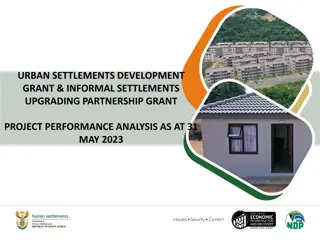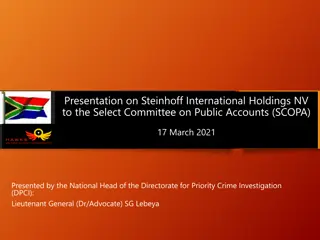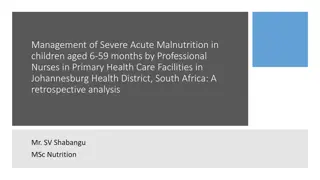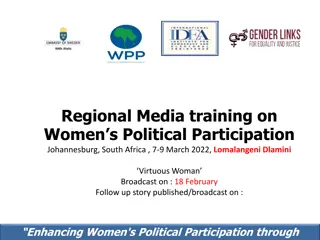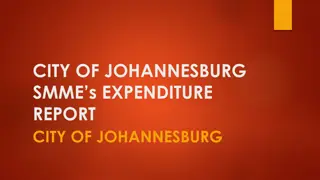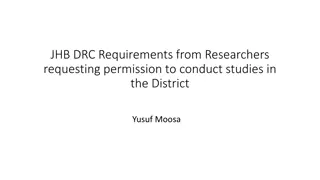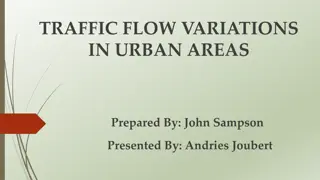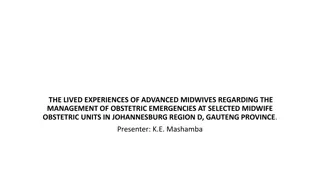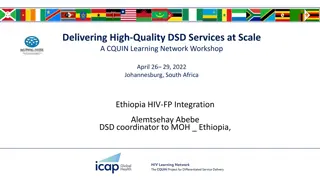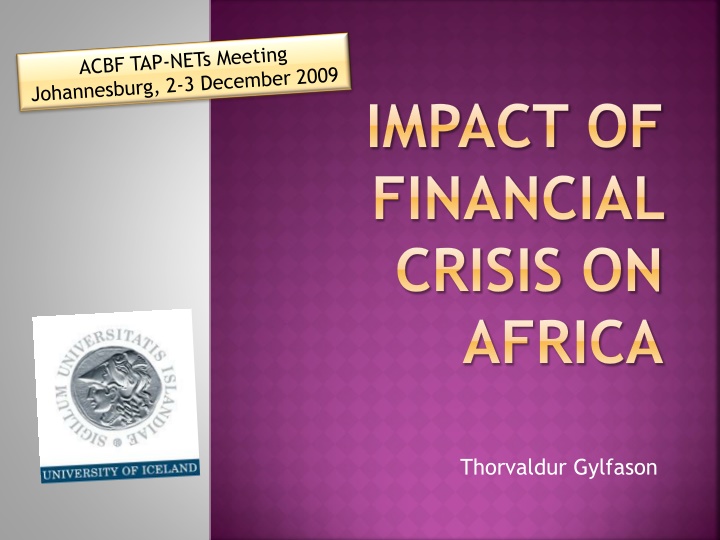
Impact of Financial Crisis on Africa - Insights and Lessons for the Future
Explore the repercussions of financial crises on Africa, historical trends, and implications for the region's economic outlook. Gain valuable insights on navigating challenges towards sustainable growth and reform.
Download Presentation

Please find below an Image/Link to download the presentation.
The content on the website is provided AS IS for your information and personal use only. It may not be sold, licensed, or shared on other websites without obtaining consent from the author. If you encounter any issues during the download, it is possible that the publisher has removed the file from their server.
You are allowed to download the files provided on this website for personal or commercial use, subject to the condition that they are used lawfully. All files are the property of their respective owners.
The content on the website is provided AS IS for your information and personal use only. It may not be sold, licensed, or shared on other websites without obtaining consent from the author.
E N D
Presentation Transcript
IMPACT OF FINANCIAL CRISIS ON AFRICA Thorvaldur Gylfason
FINANCIAL CRISIS: OUTLINE OF PRESENTATION How we got to where we are A brief history How innocent bystanders are affected by crisis Implications for Africa Where to go from here From good governance to greater helpworthiness through reform
FINANCIAL CRISIS: HOW DEEP? HOW LONG? Financial crises follow man like pandemics, with persistent regularity About every 20 years or so in United States at least from 1792 until Great Depression 1929-39 Then, long-lasting stability, with intermittent minor crises Why? Confluence of two forces, to be described And then, threat of another big one in 2008 following collapse of Lehman Brothers A big one now seems to have been averted How? Lessons from history
US GROWTH OF GDP PER CAPITA 1871-2003 (% PER YEAR) 20 15 10 5 0 1871 1875 1879 1883 1887 1891 1895 1899 1903 1907 1911 1915 1919 1923 1927 1931 1935 1939 1943 1947 1951 1955 1959 1963 1967 1971 1975 1979 1983 1987 1991 1995 1999 2003 -5 -10 -15 -20 -25
CANADAS GROWTH OF GDP PER CAPITA 1871-2003 (% PER YEAR) 20 15 10 5 0 1871 1875 1879 1883 1887 1891 1895 1899 1903 1907 1911 1915 1919 1923 1927 1931 1935 1939 1943 1947 1951 1955 1959 1963 1967 1971 1975 1979 1983 1987 1991 1995 1999 2003 -5 -10 -15 -20
UK GROWTH OF GDP PER CAPITA 1831-2003 (% PER YEAR) 15 10 5 0 1831 1835 1839 1843 1847 1851 1855 1859 1863 1867 1871 1875 1879 1883 1887 1891 1895 1899 1903 1907 1911 1915 1919 1923 1927 1931 1935 1939 1943 1947 1951 1955 1959 1963 1967 1971 1975 1979 1983 1987 1991 1995 1999 2003 -5 -10 -15
REACTION TO POSTWAR CONSENSUS In 1970s, onslaught in academic circles against active stabilization policies Theoretical and practical grounds Government intrusion into private markets Not very influential in Finance Ministries and Central Banks In 1980s, similarly motivated attack on regulation, esp. financial regulation Same forces that had condemned stabilization This time, more influential in political arena Significant reversal of 1930s financial regulation Commercial vs. investment banks: Firewall torn down in US in keeping with Europe s universal banking
REACTION TO POSTWAR CONSENSUS Appears plausible to infer that deregulation encouraged banks to take excessive risks Subprime loans in US, housing bubble, etc. But willingness to apply stabilization policies was still in place Concerted action by industrial countries seems to have turned the tide G20 agreed to inject $1.1 trillion into circulation Some think that the action should have been more ambitious Emerging consensus on need for reregulation How exactly remains to be worked out
WORLD ECONOMIC OUTLOOK ACCORDING TO IMF (2009) Real GDP growth (%) World economy Advanced economies Emerging and developing Sub-Saharan Africa 2007 5.2 2.7 8.3 7.0 2008 3.0 0.6 6.0 5.5 2009 -1.1 -3.4 1.7 1.3 2010 3.1 1.3 5.1 4.1 Advanced economies Strong output contraction, with negative growth in 2009 Emerging and developing economies Much smaller per capita output contraction in 2009, followed by return of brisk growth Even so, deepest world recession since 1960 First time world output declines since then
AFRICA: WHAT IS AT STAKE? In Africa, hard-won economic gains are at stake despite relatively weak financial linkages with advanced economies Reduced demand for African exports Collapse in world trade Also, smaller worker remittances from abroad Fall in commodity prices (e.g., Angola, Botswana) Reduced FDI due to tighter credit, flight to quality Also, reversed portfolio investment flows, putting pressure on exchange rates, equity prices, and reserves Reduced overseas development assistance These external shocks cause severe slowdown Especially in Angola, Botswana, South Africa
AFRICA: WHAT IS AT STAKE? Main challenges Contain adverse impact of crisis on economic growth and poverty Preserve hard-won gains of recent years Macroeconomic stability Debt sustainability How? Fiscal policy to cushion adverse effects of crisis There is fiscal space provided debts are low Otherwise, rely on automatic stabilizers Monetary stimulus may be feasible as long as inflation remains under control Monitor financial institutions and their balance sheets
ECONOMIC OUTLOOK FOR AFRICA ACCORDING TO IMF (2009) Real GDP growth (%) 2007 2008 2009 2010 Angola 20.3 13.2 0.2 9.3 Botswana 4.4 2.9 -10.3 4.1 Kenya 7.0 2.0 3.0 4.0 Ethiopia 11.5 11.6 7.5 7.0 Ghana 5.7 7.3 4.5 5.0 Kenya 7.1 1.7 2.5 4.0 Mauritius 4.2 6.6 2.1 2.0 Mozambique 7.0 6.8 4.3 5.2 Namibia 5.5 2.9 -0.7 1.7 Nigeria 7.0 6.0 2.9 5.0 Senegal 4.7 2.5 1.5 3.4 South Africa 5.1 3.1 -2.2 1.7 Tanzania 7.1 7.5 5.0 5.7 Uganda 8.6 9.5 6.2 5.5 Zambia 6.3 6.0 4.0 4.5 Zimbabwe -6.9 -14.1 3.7 6.0
FDI AND AID IN SUB-SAHARAN AFRICA 1960-2006 (% OF GDP) 8 FDI, net (% of GDP) 7 Aid (% of GNI) 6 5 4 3 2 1 0 Source: World Bank, World Development Indicators 2009
MORE ON AID IN SUB-SAHARAN AFRICA 1960-2006 60 8 Aid per capita (current US$) Aid (% of GNI, right axis) 7 50 Aid per capita (current US$) 6 40 5 Aid (% of GNI) 30 4 3 20 2 10 1 0 0 Source: World Bank, World Development Indicators 2009
DETERMINANTS OF FDI IN AFRICA Political risk has negative impact on FDI So does inflation, but impact is not robust GDP growth rate, literacy, and openness have positive impact on total FDI So do GDP per capita and infrastructure Capacity building helps attract FDI Conclusion is obvious Political risk and inflation need to be kept at bay Growth, education, openness, and infrastructure need to be promoted through public policy What is good for FDI is almost always good in itself, and is also good for growth
DETERMINANTS OF FDI IN AFRICA FDI encourages growth of host country by augmenting domestic capital and enhancing efficiency through transfer of new technology, marketing and managerial skills, capacity building, innovation, and best practices Even so, FDI has both benefits and costs depending on country specific conditions and policies, including Ability to diversify Absorption capacity Targeting of FDI Opportunities for linkages between FDI and domestic investment
DETERMINANTS OF AID IN AFRICA One major determinant: Political goodwill which, increasingly, depends on helpworthiness as perceived by donors Helpworthiness can by built up by reforming policies and institutions through Freer trade to enhance efficiency More and better education to promote better, longer lives in smaller families More FDI, without sacrificing resources or rights Infrastructure, including energy grids to facilitate yes! air conditioning Monetary integration, as planned, to beat inflation
CONCLUSION Marked, but uneven progress in recent years Botswana s per capita GDP has grown by 5% a year since 1980 Secondary school enrolment is 75%, up from 48% in 1991 Births per woman have decreased from nearly 7 in 1960 to 3 Life expectancy is rising again after tragic drop due to Aids Important economic and social gains are now threatened by global crisis The right way to react to this threat is to invigorate reforms of policies and institutions Now, as always, is the time to reform

